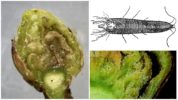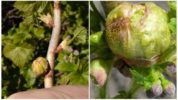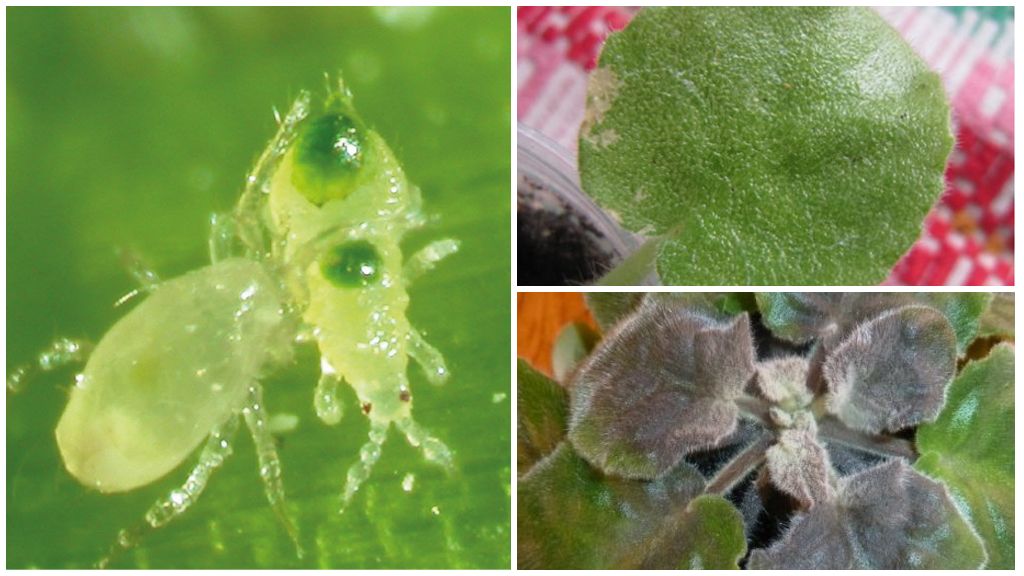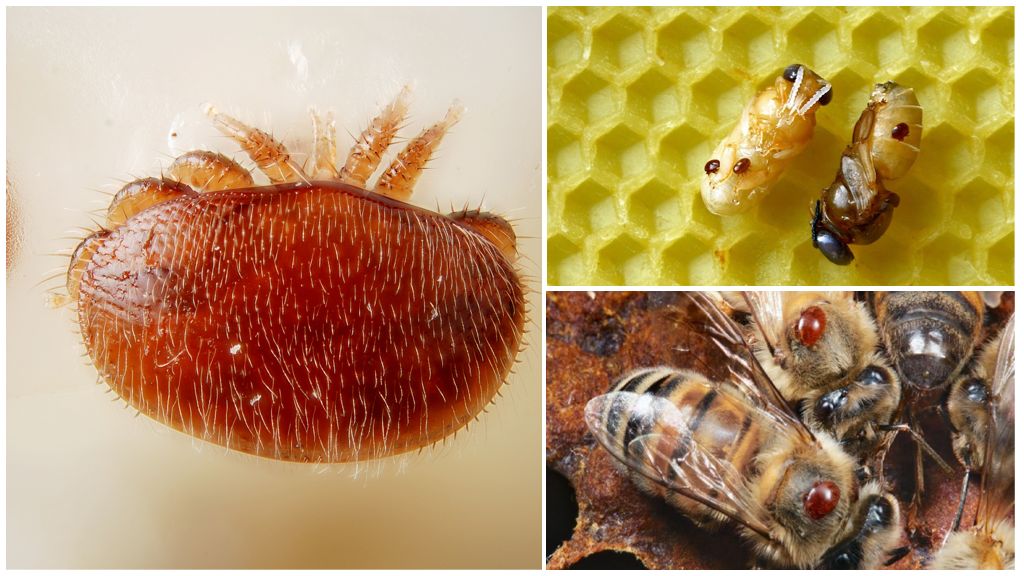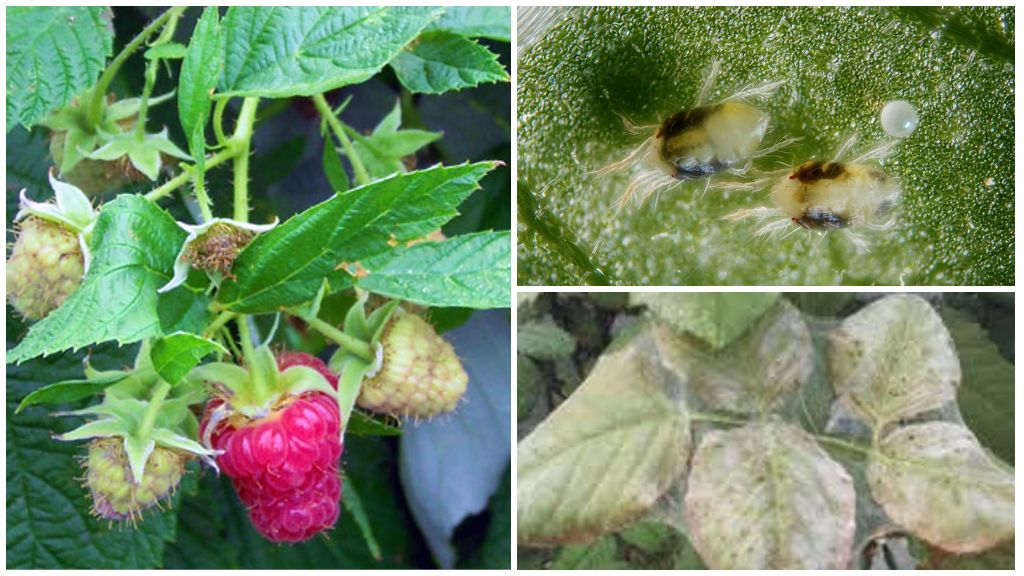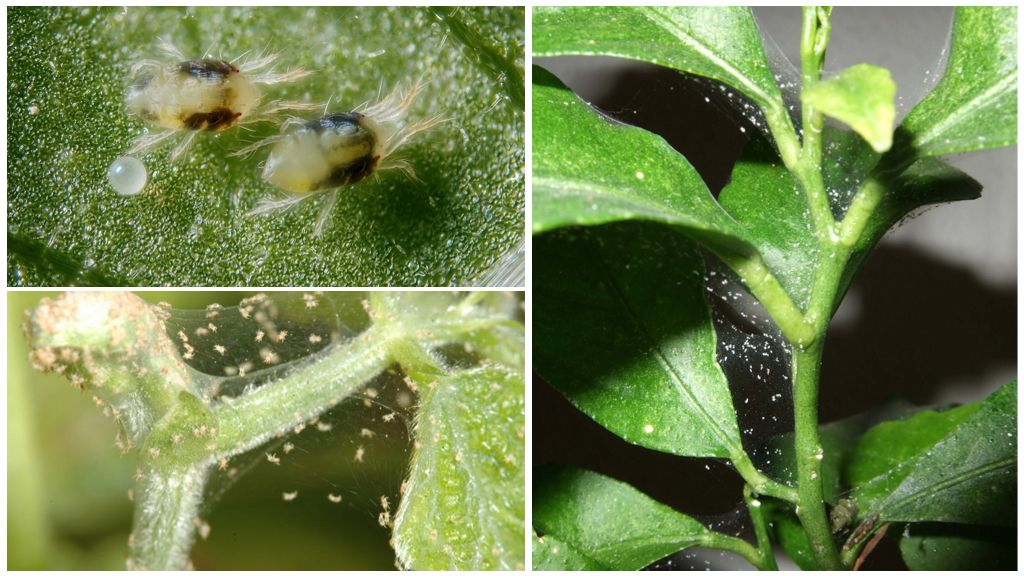- Currant kidney mite
- Currant kidney mite
- Kidney tick insecticides
- Folk remedies for combating the kidney tick
Currant is a valuable berry, which contains a large number of nutrients and trace elements. Therefore, it is not surprising that many summer residents and owners of private and suburban real estate grow tasty, juicy red and black berries on their plots. Like any plants, currants have their own enemies. One of them is a renal tick - a dangerous pest that can weaken the plant as much as possible and subsequently lead to its death. There is a kidney tick on cherries and other garden crops. Before you know what measures exist to combat the kidney tick on currants, you need to figure out what this parasite is.
The appearance of a kidney tick
A currant kidney tick resembles a tiny worm. The length of his body is 0.2 mm and the width is 0.04 mm. It is impossible to examine it with the naked eye. To get acquainted with the pest, you need to carefully study the photo of a kidney tick, enlarged tens of times. The entire cycle of pest development takes place on the plant. In the first month of spring, the female lays eggs. They have an oval shape, which in the process of development acquire a milky white hue.
A bud in the spring comes out of its hiding place when the first leaves and flowers appear. Individuals creep across the bush, populating the bark and leaf plates. Almost all kidney mites die. Only 1% of parasites survive, for a permanent residence they choose new buds and continue to multiply. On one bush of currant, bud mites can parasitize for five generations. Only in 1 time the female is able to lay about 100 eggs.
On a note!
Parasites are carriers of viral diseases that greatly weaken currants. The bush becomes prey barbelstem glass gold. Having broken a damaged kidney, you can see that it is completely filled with vitreous eggs. After about a week, larvae appear from them.
Signs of infection of the bushes
The kidney mite resists cold. At a temperature of + 5 ° C, the female already lays eggs. Thousands of larvae can appear from one kidney of a currant. The presence of eggs can be noticed by the size of the kidney, it becomes large, similar to a ball. This is the first sign that determines the presence of a kidney tick.
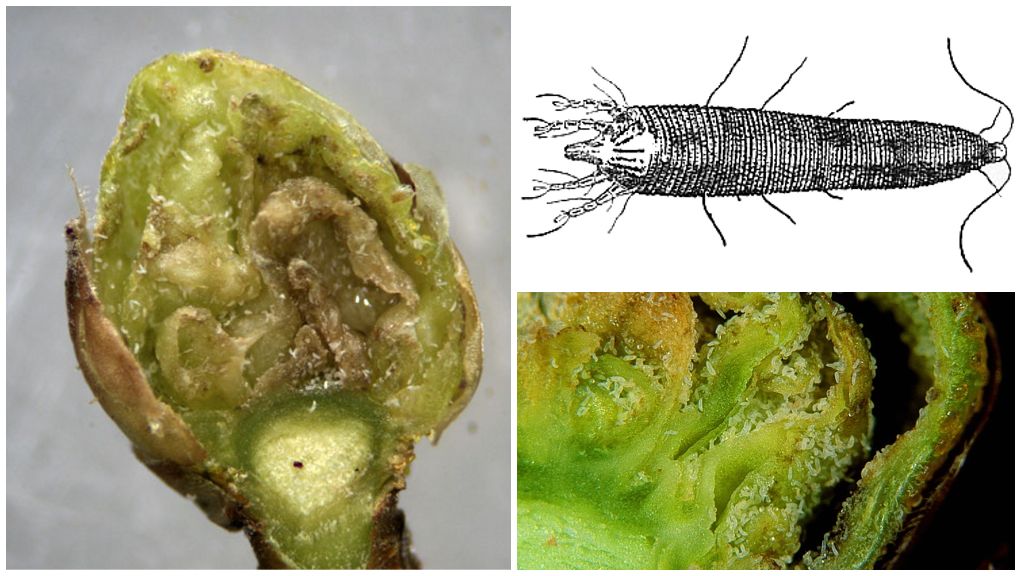
On a note!
Ticks under the influence of strong winds are transferred to adjacent bushes. During their mass spread of parasites can be seen with the naked eye.
You can find out about the presence of a tick at different times of the year by the following signs:
- In spring, the parasites eat intensely, multiply rapidly, affecting the kidneys of currant. As a result, they do not shoot, and most often die. When the first leaves begin to appear, 2 generations of pests are already present in the kidneys. It’s crowded there, they go outside, besiege new buds and young shoots.Parasites spread throughout the currant bush and move to a neighboring plant. Therefore, flowering is negligible and the fruit is very small.
- In the summer, it becomes noticeable on blackcurrant that some shoots are curved, they are underdeveloped, and the bush itself takes on an untidy shape. The color of the deformed leaflets at the top becomes much lighter.
To avoid this, it is recommended to process the currant in the spring, using special tools for this purpose.
Currant mite control methods
Not everyone knows how to deal with the kidney tick on the currant competently. The use of pesticides during the period of mass reproduction of the kidney tick is prohibited. This is due to the fact that at this time the currant blooms violently, the berries are tied. Many drugs are dangerous for insects pollinating a plant. Therefore, the treatment of diseases of blackcurrant must begin in the spring and after harvest.
To get rid of parasites on the currant, use different methods.
Biological
This method consists in collecting kidneys affected by a kidney tick, since it is in them that a huge number of pests are located. They should be removed until they begin to burst. The procedure is quite time-consuming, since it is necessary to remove all infected buds, carefully inspecting the currant bush. It should be carried out with gloves. The collected kidneys are burned or doused with boiling water. This method does not give a 100% guarantee of getting rid of parasites. They can be found in other kidneys that have a normal appearance, just the number of pests in them is not so large.
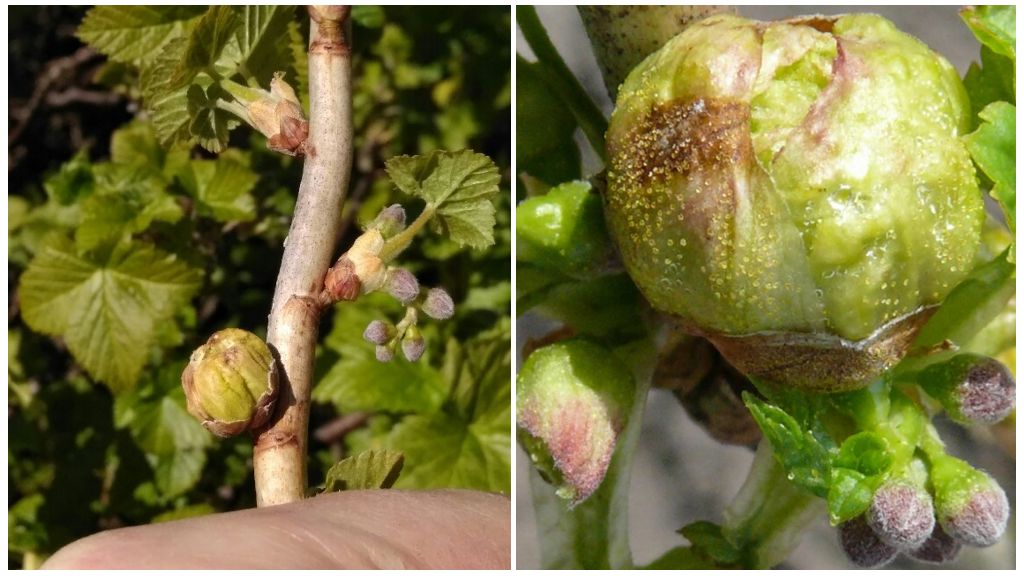
On a note!
Some gardeners use boiling water to destroy the ticks on the currant. Perform the procedure in the spring. It is important to do it right. After the water boils, it should be poured into a watering can (the temperature will decrease by this time) and, raising the device 15-20 cm above the shoots, treat the bush. The tick dies at a temperature of + 45 ° C, it does not harm the plant.
Biological products
Biological products are less dangerous for people and their environment, unlike pesticides. They are quite effective, but have a short duration of action. Most of the products on the market belong to the third security class. Biocarcides are used to remove pests in spring when the air temperature reaches + 16 ° C. Such drugs showed good efficacy:
- Akarin. Inexpensive remedy, available in ampoules. The cost is from 14 to 20 rubles. To treat the currant, dilute 20 ml of the preparation in 1 liter of water and spray the currant bush with the resulting solution. After 3 days, the procedure should be repeated.
- Bitoxibacillin. The product is available in the form of a powder of various packaging, so the price ranges from 22 to 42 rubles. To obtain the composition, it is necessary to dilute 100 g of powder in a bucket of water. Sprayed during the season 2-3 times, taking a week break between the procedures.
- Fitoverm. The cost of packaging, which includes a 2 ml ampoule, is about 20 rubles. With the destruction of parasites, the drug shows good results. On the package there is a table according to which the dosage should be selected.
Important!
Manufacturers recommend taking safety measures: wear protective clothing, gloves. Strictly follow the instructions that came with it.
Chemicals
Not all kidney mite chemicals are suitable for controlling this parasite on currants. Some of them belong to the third security class. Highly hazardous acaricides and insectoacaricides of the second class are most effective. It is recommended to use them in rare cases, strictly observing safety measures.
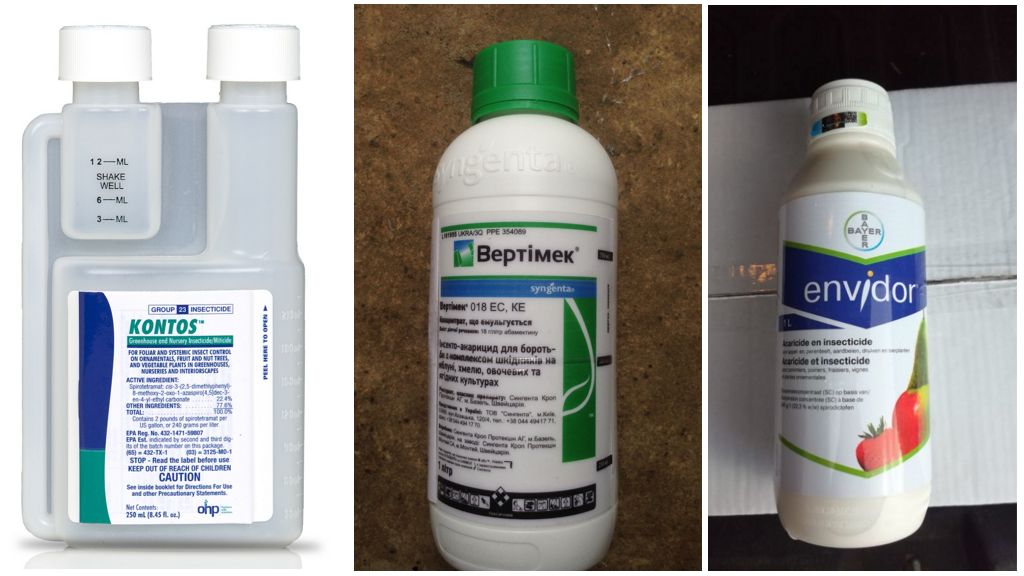
You can treat currants from ticks with the help of such drugs:
- Kontos. For spraying, you need to dilute 1 ml of the product in 3 liters of water.The result is visible 10 days after processing. Price - 129 rubles.
- Vertimek. To destroy the ticks, it is necessary to mix 1 ml of Vertimec and Envidor or instead 1 g of Nissoran, dilute in 1 liter of water. The resulting mixture to spray the plant. The cost of the drug is 35 rubles.
- Envidore. To obtain a solution, you should dilute 2-3 ml of the product in five liters of water. The price of the drug is 47 rubles.
- Nissoran. The funds are available in powder form, the cost of packaging is 110 rubles. It has a wide range of acaricidal action. To prepare the mixture, you need to dissolve 1 g of powder in 1 liter of water.
After collecting currant berries, it is recommended to re-treat the bushes using stronger drugs: Nitrafen, Bi-58, Tick-borne, Anti-tick, Phosphamide, etc.
Experts recommend alternating acaricides, it is necessary to carry out processing clearly following the instructions. Wear spray protection on eyes and hands during spraying.
Feedback:
I use Acarin. Great drug. It is effective in controlling many pests, including good results when killing a gall tick on a pear.
Alexandra, Tula
Folk remedies
Gardeners use folk remedies to combat the kidney tick on currants:
- Infusion of dandelion roots. To prepare the mixture, you need 50 g of leaves, grind 200 g of peeled roots, pour 10 l of water and leave for 3 hours.
- Garlic infusion. To prepare it, you need to chop 200 g of garlic, pour 10 liters of water, insist for several hours, strain and spray the currant bushes.
- Mustard tincture. Mix mustard powder in an amount of 200 g with 10 l of water, leave for 12 hours, filter the mixture and wash the currants from ticks with it.
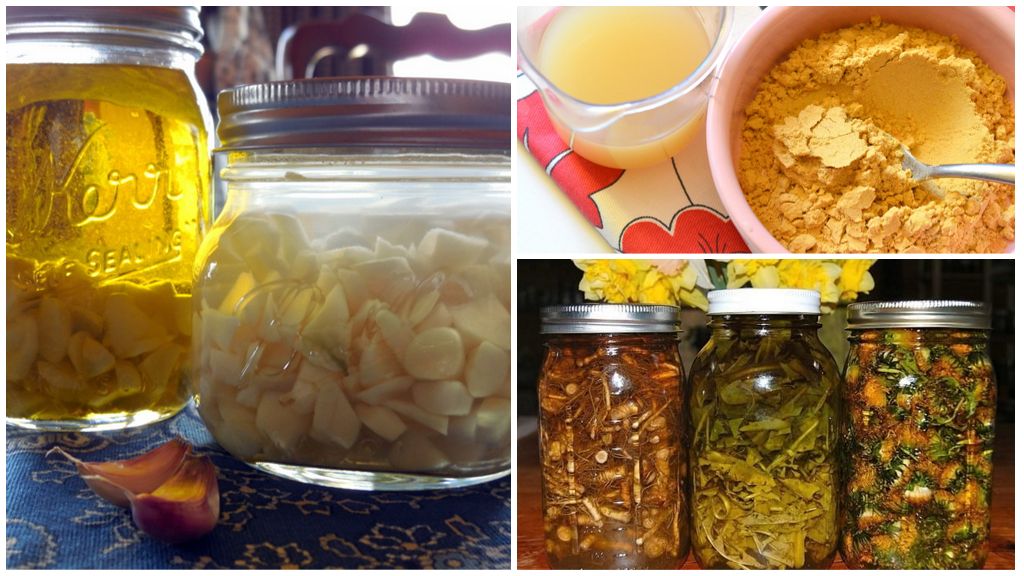
On a note!
The kidney mite does not like the smell of onions and garlic. Therefore, they can be planted next to the currant. But it should be remembered that if chemicals were used to kill parasites, you should not eat onions and garlic.
Feedback
To destroy pests of currants, I use garlic infusion every year. I do it in the spring and summer. The result is excellent.
Nina, Kursk
Varieties of currants resistant to kidney mites
Among the different varieties of currants there are shrubs that are resistant to such a pest as a tick. From black grades it is: Chernysh, Otradnaya, Black pearls, Riddle. Such varieties as: Red Cross, Lights of the Urals, Scarlet Dawn, Ilyinka belong to red currant. Of the white varieties - Squirrel, Bayan, Snezhana, White Fairy.
Prevention
In order to prevent infection of currants with a kidney tick, it is recommended to carry out preventive measures.
- For planting, you need to use uncontaminated raw materials.
- Remove weeds in time.
- In early autumn and late spring, inspect the bushes for infection with flares. Affected kidneys must be removed.
- Use biological and chemical preparations according to the instructions.
The gardener practitioner G. A. Kizima recommends that the bushes be trimmed necessarily and timely. In black currant, you need to trim the black branches. In red and white varieties, the tops do not need to be trimmed, only old branches and those that grow inside the crown are removed.
